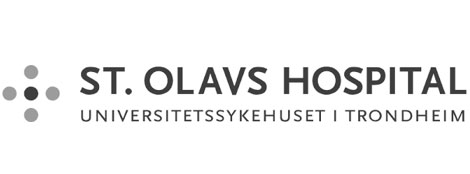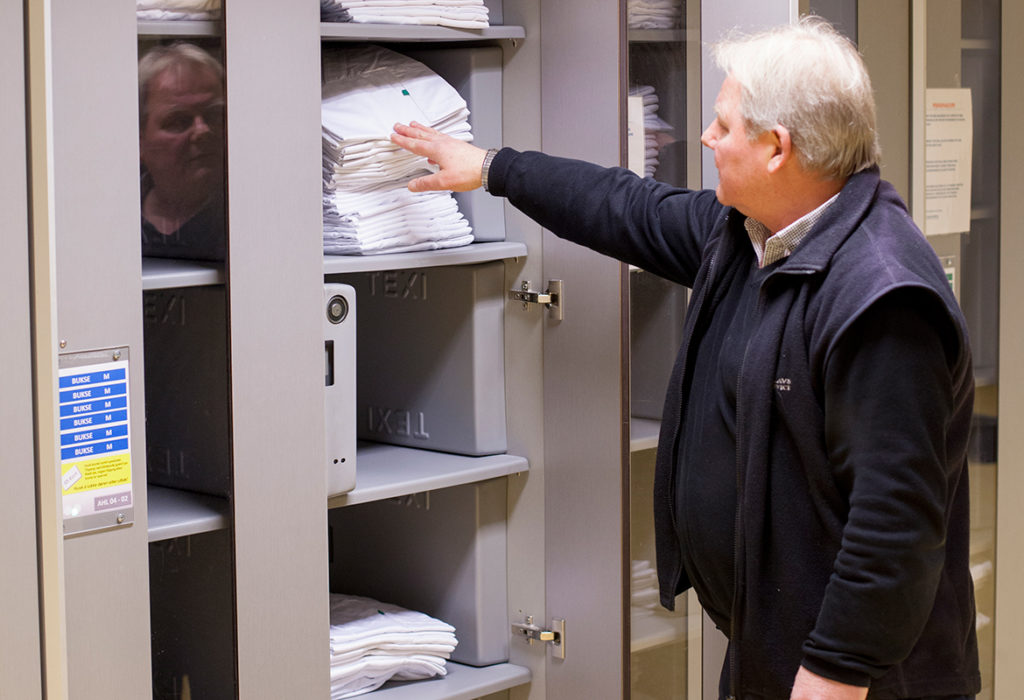
- St. Olavs HospitalSt. Olav’s Hospital in Trondheim installed Texi AB’s textile solution in 2004: “This way of handling workwear has a number of advantages,” says Roar Sommer, head of logistics and supply at St. Olav’s. St. Olav’s Hospital, the university hospital in Trondheim, is one of the world’s most modern hospitals and has over 10,000 employees. In […]

St. Olav’s Hospital in Trondheim installed Texi AB’s textile solution in 2004:
“This way of handling workwear has a number of advantages,” says Roar Sommer, head of logistics and supply at St. Olav’s.
St. Olav’s Hospital, the university hospital in Trondheim, is one of the world’s most modern hospitals and has over 10,000 employees.
In 2004, St. Olav’s started using Texi AB’s solution for textiles:
“Previously we stored and dispensed workwear in 90 locations around the hospital. At each location, there was a person who was responsible for this as part of their job duties. After the transition to Texi, these were reduced to 23 stations located in the basement levels which meant that it freed up a lot of space for beds,” says Roar Sommer, head of logistics and supply at St. Olav’s.
What do you see as the major advantages of Texi’s textile solution?
“There are many advantages. One of these is that it’s highly space efficient. We can provide many employees with clothes in a small space. In total, we have 260 textile cabinets and we can move these around in order to best facilitate logistics for the staff. The flexibility is very valuable,” says Sommer.
St. Olav’s has also made a significant change in terms of the garments that are available for staff. Previously, individual departments had specific colour schemes for their work clothes.
Now all staff have access to all clothes which are available in blue, white and green:
“We have halved the number of sizes available from 60 to 30. This makes things easier for both the staff and the laundry. And of course, it means lower costs for garment management at St. Olav’s. Between 2015 and 2017, we lowered the cost of workwear and its management by 10 million NOK,” says Sommer.
How do staff go about picking up their clothes for the day?
“All staff change their work clothes at least once every day. Any need to change several times will obviously be dependent on what tasks they have on that particular day. When they come to work, they go to the Texi cabinets and pick out the garments that they will use that day. Previously, there was a major challenge in that workwear could remain in staff lockers or at other locations around the hospital. Now, there’s a limit to how many garments each employee can collect. It means that we have a much better track of our garment stock. After the end of their shift, the staff member goes to the clothing return station and puts the clothes in there. The withdrawal of the clothes is credited via the microchip found in every garment. This also means that we don’t need more clothes in circulation than are actually used,” says Sommer.
Every night at 11pm, an automatic order with what needs to be replaced by the following morning is sent from the textile cabinets directly to the laundry.
“That this is automatic is a great advantage. We don’t need to have personnel keeping an inventory of what is available and what is needed for the next day. We know the clothes that are available will suffice,” says Sommer and continues:
“We are very pleased with Texi’s textile solution. There are, as I said, a number of advantages and we have frequent and rewarding dialogues with Texi. If I could make just one suggestion for improvement it would be that it should be possible to have carts in every department for returns. Especially in those departments where there is a large turnover of workwear every day. We are hopeful that this will become a reality in the near future,” says Sommer.
St. Olav’s University Hospital in Trondheim
- Outpatient consultations: 649,470 per year. Somatic admissions: 56,217.
- 737 beds
- 10,411 employees (there are 5,500 registered users of the textile cabinets at the main hospital).
Fact summary
How it works:
- The user scans their personal access card to open the textile cabinet
- Assortment and sizes are shown on the door of the cabinet
- The withdrawal is registered and charged to the user’s account
- When the clothes are returned to the return unit, the user account is credited
This provides
- Complete control over all workwear
- The right workwear in the right place at the right time
- Automatic ordering processes
- Minimised waste
- Space saving
- Increased turnover of clothing, they don’t become “shelf-warmers”
- Hygiene optimisation of textiles
- Operational reliability – during a power failure the cabinets open automatically
- Hospitals can focus on their primary task